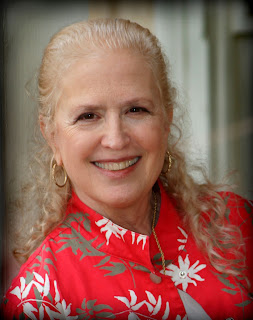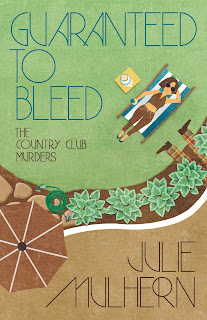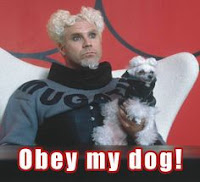To Prologue or Not to Prologue
by Marjorie Brody
 I need your opinion. In my next psychological suspense novel, That Night, an event occurs when the protagonist is five years old. The story is told from two points of view, the daughter’s and the mother’s. It’s the daughter’s story of discovery about what happened that night.
I need your opinion. In my next psychological suspense novel, That Night, an event occurs when the protagonist is five years old. The story is told from two points of view, the daughter’s and the mother’s. It’s the daughter’s story of discovery about what happened that night.
Normally, I’d start the story with the inciting incident, the trigger that pushes the now-grown daughter to pursue what happened, and if I needed backstory, I’d sliver it in, in teeny-tiny pieces. But in this story, it’s crucial for the reader to experience the whole scene of what occurred so they will understand the characters’ interpretations about the event that sets up the whole novel.
The main scene seems too much for a prologue. I could jump back and forth from past and present (labeling the years), or I could divide the book into two parts. Part I would begin twenty-two years earlier, be told from the mother’s and the daughter’s points of view. Part I would span several years. Part II would only be told only from the daughter’s perspective–although the mother would be involved–and would all happen within one month in the present.
I’m sure you’ve read, and/or written, stories where there is strong action in more than one time frame. (Most novels contain significant backstory or prior character wound, but the reader doesn’t need immediate exposed to all those details, just how it affects the protagonist in the present.) When you’ve read those types of novels, what style of transition feels most comfortable as a reader? Or doesn’t it matter as long as the time frames are clear and the story is compelling?
To give you a flavor of what I’m writing, here’s an excerpt.
There had been fights before, but never this loud, never this scary.
When Daddy Trey slammed Mommy onto the bed and Mommy kicked him in the pee-pee, Angelina came out of her hiding place, scooped Baby Brother off the pillow and ran from the bedroom. She grabbed his cuddly blue blankie off the floor in the hall and darted out the trailer.
 Late afternoon air blew its frosty breath at her, but she was in too much of a hurry to go back inside and get her coat or change her bunny slippers for leggings and boots. Mommy had said they could stay in their nightgowns for the whole day. Now she wished they had gotten dressed.
Late afternoon air blew its frosty breath at her, but she was in too much of a hurry to go back inside and get her coat or change her bunny slippers for leggings and boots. Mommy had said they could stay in their nightgowns for the whole day. Now she wished they had gotten dressed.
She placed the blanket in her Red Flyer wagon, set Baby Brother in the middle of it and tucked the rest of the blankie around him.
“Good baby,” she said, relieved Jamie wasn’t making a fuss. She didn’t have time to hold him and rock him like she did when Mommy yelled, “For God’s sake, Angie, keep that kid quiet. I’m trying to sleep.” She needed him to be good, and he was. He didn’t cry. He didn’t squirm.
“Thank you, Baby Brother. I love you.”
How could anyone not love Baby Brother? He had such a cute face, and the tiniest fingers and toes. Angelina didn’t even mind that Daddy Trey liked Jamie better than he liked her. Mommy said she liked them both the same, but Angelina knew better. Baby Brother was special. He came out of Mommy’s belly way before anybody ‘spected him to—which explained his being so tiny and all—but he came out on Mommy’s birthday, so he was Mommy’s present, even if sometimes she wanted to take him back. She liked to take things back. She’d buy a new dress to go dancing with Daddy Trey at the Joint, and the next morning she’d put the tag back on and take the dress back to the store. But Jamie didn’t have a tag, so Angelina hoped Mommy wasn’t allowed to give him back.

More than Mommy, and even more than Daddy Trey, Angelina loved Baby Brother, and he loved her. She could tell. He liked it when she rocked him. He would smile his baby smile at her, with his perfect little lips flickering up at the corners. Mommy said it was gas and not a real smile, but what did she know? Babies didn’t have gas. Cars had gas.
The rest of the scene continues to shows what happened that night.
So, let me know what kind of organizational style you enjoy reading when there are significant events in two time frames and they link in life-altering ways. Maybe then I can stop organizing and reorganizing this novel and get That Night into the hands of the agent and editor who are waiting to read the final version. Thanks.
 Marjorie Brody is an award-winning author and Pushcart Prize Nominee. Her short stories appear in literary magazines and the Short Story America Anthology, Vols. I, II and III. Her debut psychological suspense novel, TWISTED, was awarded an Honorable Mention at the 2013 Great Midwest Book Festival and won the Texas Association of Authors 2014 Best Young Adult Fiction Book Award. TWISTED is available in digital and print at http://tinyurl.com/cvl5why or http://tinyurl.com/bqcgywl. Marjorie invites you to visit her at www.marjoriespages.com.
Marjorie Brody is an award-winning author and Pushcart Prize Nominee. Her short stories appear in literary magazines and the Short Story America Anthology, Vols. I, II and III. Her debut psychological suspense novel, TWISTED, was awarded an Honorable Mention at the 2013 Great Midwest Book Festival and won the Texas Association of Authors 2014 Best Young Adult Fiction Book Award. TWISTED is available in digital and print at http://tinyurl.com/cvl5why or http://tinyurl.com/bqcgywl. Marjorie invites you to visit her at www.marjoriespages.com.



Why not go back and forth and put the dates at the top of the page to let the reader know you're stepping back in time?
prologue
That's what I originally did, Marilyn–going back and forth, with dates on the top, and one scene tying into the scene I switch to. Then I wrote it as a prologue as you suggested, Pam. Then I wrote it as two separate parts. I'm glad to get your feedback. Thanks.
Seems like either method would work. I suggest you pick one and send it to your agent soon. You will of course keep the runner-up on file. Then when either your agent or the publisher says, oh let's try it this other way, you have a back-up. Whichever you choose, someone is bound to want the other one. I am being practical here. Basically, Marjorie, if you have a gut feeling which one you prefer, then go with it, and you are prepared with something in reserve. Best of luck!
This comment has been removed by the author.
Thanks, Kay. I can do that.
Well, that's just great. Now I'm worried about why the baby wasn't crying or squirming and the book isn't even done yet. I say Prologue and leave it on a bit of a cliff hanger, so the reader has to find out what happened along with the heroine.
Just a reader here. I am with Bethany. When do we get to find out what happens next. Keep us informed. I'm an avid reader so I feel the structure is up to you. I pretty much read everything.